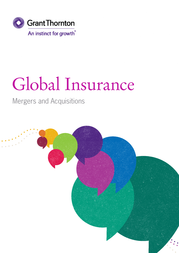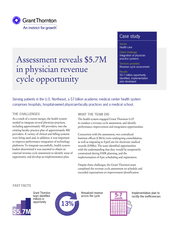Transaction disputes: Extract more value - Over $1.1 trillion in U.S. and $2.4 trillion in global M&A deals – September 18, 2014
Grant Thornton
Description
Content in this publication is not intended to answer specific questions or suggest suitability of action in a particular case. For additional information about the issues
discussed, consult a Grant Thornton LLP client service partner or another qualified professional.
Connect with us
grantthornton.com
@grantthorntonus
linkd.in/grantthorntonus
“Grant Thornton” refers to Grant Thornton LLP, the U.S. member firm of Grant Thornton International Ltd (GTIL). GTIL and its member firms are not a
worldwide partnership.
All member firms are individual legal entities separate from GTIL. Services are delivered by the member firms. GTIL does not provide services to clients.
GTIL and its member firms are not agents of, and do not obligate, one another and are not liable for one another’s acts or omissions. Please visit grantthornton.com for details. © 2014 Grant Thornton LLP  |  All rights reserved  |  U.S. member firm of Grant Thornton International Ltd .
All member firms are individual legal entities separate from GTIL. Services are delivered by the member firms. GTIL does not provide services to clients.
GTIL and its member firms are not agents of, and do not obligate, one another and are not liable for one another’s acts or omissions. Please visit grantthornton.com for details. © 2014 Grant Thornton LLP  |  All rights reserved  |  U.S. member firm of Grant Thornton International Ltd .









